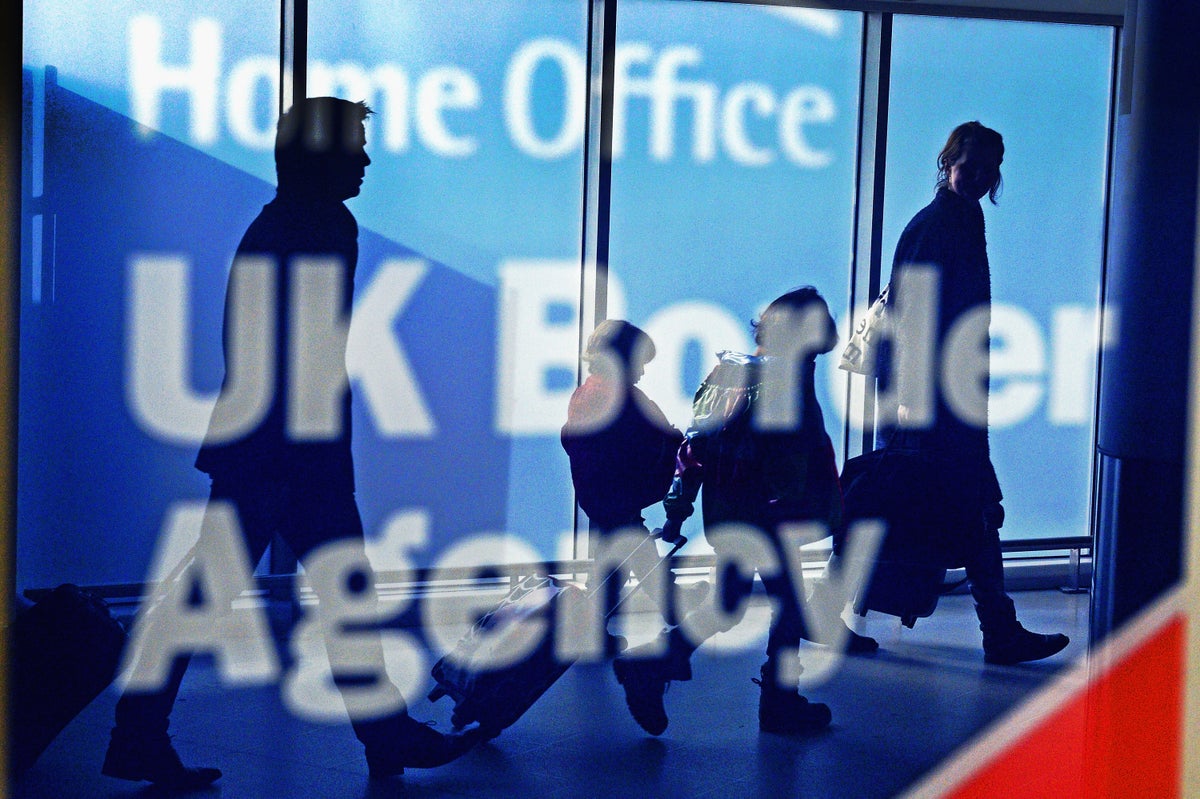
Net migration to Britain is predicted to rise to 245,000 people a year over the next few years, eclipsing earlier projections, in a blow to the government’s pledge to keep the number of arrivals down.
The latest figures from the Office for Budget Responsibility (OBR), announced on Wednesday, were up from 129,000 last March, and 40,000 above last November’s forecast, following a spike in the number of arrivals to the UK.
Despite the upward revision, Downing Street said it was committed to cutting net migration, and pointed to OBR analysis that found the figures to have been driven in part by the short-term increase in arrivals from Hong Kong and Ukraine.
Businesses have called for a more relaxed approach to migration in order to boost growth, as staff shortages weigh heavily on many firms.
The government has largely resisted the pressure, saying companies should train their staff better in order to boost productivity, but it has eased hiring rules in the hardest-hit sectors, and on Wednesday said it would now make it easier for construction companies to hire overseas workers.
The latest projections continue a pattern of resilience in Britain’s overseas appeal, despite fears that new arrivals would stay away after Brexit. Last year saw a record-high net migration figure, with 504,000 more people arriving than leaving.
The boom was partly due to the resumption of international travel after the pandemic – especially among foreign students – as well as the implementation of a new post-Brexit visa scheme and the influx from Hong Kong and Ukraine. But analysis by the Financial Times found it was also down to employers making much greater use than expected of new post-Brexit immigration arrangements such as the Skilled Worker visa.
Despite the record figures, research has found that public attitudes towards migration have become more positive. A study published last week by the UK in a Changing Europe think tank found that, for the first time in polling history, more people wanted migration levels to increase or stay the same than wanted them to fall. The public was also more likely to believe that immigration has a positive impact on the UK than not.

Concerns about the level of immigration were a major driver behind the 2016 referendum vote to leave the European Union, and the Conservative Party had promised to cut net migration to under 100,000 annually until that pledge was dropped before the 2019 election. Rishi Sunak has revived the focus on cutting migration, but refused to commit to an “arbitrary figure”.
However, the prime minister’s goal has been found to conflict with his desire for growth. A spokesperson for the OBR said: “A larger population, due to increased net migration, adds 0.5 per cent to potential output in 2027,” as the forecaster released its economic outlook report in tandem with the chancellor’s 2023 Budget.
Jeremy Hunt on Wednesday unveiled measures including expanded access to childcare and an overhaul of the welfare system, to help get more people into work and alleviate a tight labour market.
But critics said the plan to fill empty jobs clashes with the government’s controversial new law that would remove all migrants who arrived in Britain without permission in small boats across the English Channel.
“Instead of stoking fears over Channel crossings, ministers whose plans rely on high levels of economic migration should be levelling with the public about the economic benefits immigration can bring,” said James Kirkup, director of think tank the Social Market Foundation.







